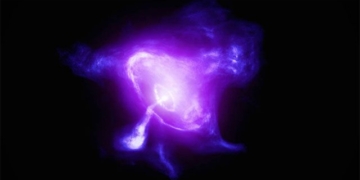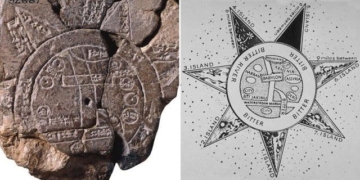Scientists were puzzled upon discovering Mimas – a frigid celestial body orbiting Saturn, which possesses seemingly contradictory characteristics.
According to Sci-News, Mimas is a small moon of Saturn, with a radius of only 198.3 km, and is described as resembling the “Death Star” mentioned in the Star Wars franchise.
However, after being considered a barren land covered in impact craters for many years, new data sent back by NASA’s Cassini spacecraft while observing Mimas has raised questions: It appears that this tiny satellite must have a subsurface ocean that is continually expanding.

Saturn’s moon Mimas – (Photo: NASA).
This finding seems to contradict other evidence indicating that tectonic activity on Mimas is very sparse, with no past or present volcanic activity that would be necessary to maintain a subsurface ocean beneath the icy crust.
In a new study, Dr. Alyssa Rhoden from the Southwest Research Institute (USA) noted that the strange data collected by Cassini in the final days of its mission, before it undertook its ultimate sacrifice dive into Saturn to gain deeper insights into its dense atmosphere.
The results suggest that if Mimas does indeed have an ocean, it could be a small ocean layer hidden beneath at least 55 km of thick ice.
Previously, it was thought that the presence of an ocean was nearly impossible due to the so-called “Herschel impact”, a significant celestial collision in the past that left a large impact crater.
The remnants of this impact help complete the puzzle: The ice shell of Mimas has significantly thinned since the formation of Herschel, which could explain the moon’s smooth surface.
This thinning is attributed to the rise in the celestial body’s temperature, which also contributes to the formation of a subsurface ocean that is expanding.
Researchers are still validating some data as there are still inconsistencies in the inferred characteristics of this peculiar moon. However, if it truly is an emerging ocean world, knowledge about it would be immensely significant for studying the formation, evolution, and potential habitability of all other medium and large moons of Saturn.
This is particularly noteworthy as Saturn is believed to contain “ocean moons,” with Enceladus and Titan attracting special interest from space agencies.
If it indeed has an ocean and could support life, the possibilities of searching for extraterrestrial life could extend to the moons of other planets, such as Uranus.
The initial results were recently published in the scientific journal Geophysical Research Letters.





















































